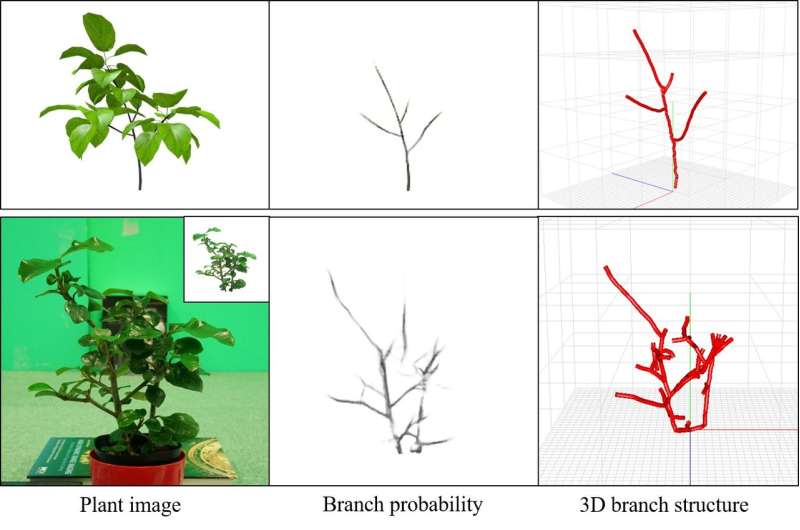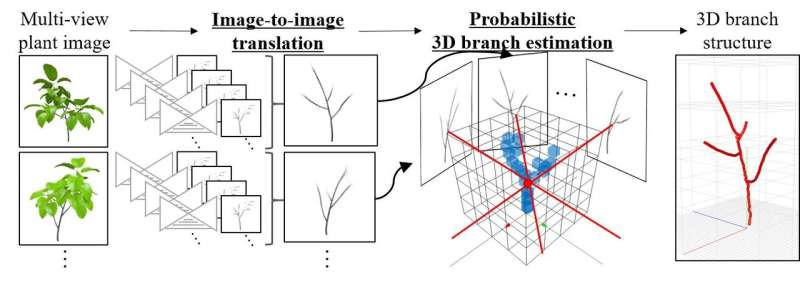Fig.1. Estimated 3D plant branch structure. Credit: Osaka University
Thoroughly understanding the growth of branches and leaves of individual fruit-bearing trees and adequately managing them are important in improving their quality. However, daily observation and advanced knowledge are necessary for proper management and cultivation of trees, so tree management systems using cameras are drawing attention. The automatic 3-D modeling of plant shapes and branch structures from images is an indispensable technology for pursuing both labor-saving cultivation and improvement of product quality.
Three-dimensional (3-D) reconstruction from multiple images obtained from different viewpoints has been actively examined. However, it was difficult to reconstruct the structure of objects that have hidden portions, such as plants with branch structures hidden under their leaves.
By combining the original image-to-image translation approach in a Bayesian deep learning framework and 3-D reconstruction, a group of researchers led by Fumio Okura estimated the existence probability of branches that are hidden under leaves in images. Using these estimated branch positions, they achieved accurate 3-D reconstruction of branch structures, including those hidden under leaves. Specifically, they converted images of leafy plants to images showing branch existence probability, thereby achieving 3-D reconstruction.
The results of this study will be presented at the EEE/CVF Conference on Computer Vision and Pattern Recognition (CVPR 2018) to be held from June 18 through June 22, 2018. The paper presented at the conference will be published in Computer Vision Foundation Open Access as part of the conference proceedings on June 4, 2018.
Fig.2. Flow of the proposed approach. Credit: Osaka University
The results will contribute to the cultivation and management of plants by artificial intelligence (AI) and image analysis. They will be helpful in realizing future cultivation technology to allow for (a) detailed daily management of branch/leaf level process of growing plants in places where cultivators' vision can't reach by filming with a drone or robot, (b) coming up with best trimming or pruning methods for plants, and (c) forecasting future growth of plants.
Fig.3. Future cultivation via plant structure estimation. Credit: Osaka University
More information: Probabilistic plant modeling via multi-view image-to-image translation. IEEE/CVF Conference on Computer Vision and Pattern Recognition (2018)
Provided by Osaka University

























